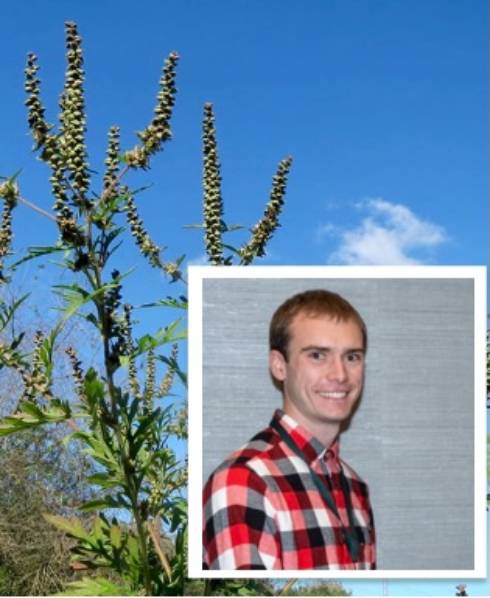Final Thesis Defense Crop and Soil Science M.S. Degree: Nash Hart
November 20, 2025 9:00AM - 10:00AM

Room A 271 PSSB
Members of the Examining Committee and their Department:
- Dr. Erin Burns - Plant, Soil and Microbial Sciences
- Dr. Eric Patterson - Plant, Soil and Microbial Sciences
- Dr. Timothy Miles – Plant, Soil and Microbial Sciences
ABSTRACT
Common ragweed (Ambrosia artemisiifolia) is a globally distributed, difficult to control weed that can cause severe crop yield losses if not properly managed. Clopyralid is a synthetic auxin herbicide widely used to control common ragweed and other Asteraceae weeds. In 2016, a highly clopyralid resistant common ragweed population was reported on a Michigan Christmas tree farm. With this biotype, two experiments were conducted to 1) determine how clopyralid resistant common ragweed plants respond to interactive abiotic stressors including soil moisture, nitrogen availability, and low dose herbicide stress in a greenhouse experiment and 2) investigate inheritance and potential resistance mechanisms using greenhouse dose response assays, genetic segregation, and RNA-seq approaches. In objective 1, we found resistant plants initiated bud formation 19.8 days earlier, produced pollen 19.6 days sooner, and produced 24% more seeds than susceptible plants. In objective 2, we found that resistant plants are 28.4-fold more resistant to clopyralid compared to susceptible plans and inheritance follows a two-gene 3:13 resistant:susceptible segregation, consistent with multigenic recessive inheritance. Analysis of the potential herbicide target site revealed 23 single nucleotide polymorphisms but none of these were consistent enough to cause resistance. Across 23 Aux/IAA transcripts containing the degron sequence, three contained polymorphisms, but none consistently co-segregated with resistance. Differential expression analysis identified 70 genes with 39 upregulated and 31 downregulated in resistant plants including candidates in auxin/ethylene signaling, metabolism, cuticular wax biosynthesis, and stress modulation, supporting a non-target site resistance mechanism. Overall, these experiments investigated the genetic, molecular, and competitive changes associated with clopyralid in common ragweed. Understanding the cause of resistance will be critical for sustaining crop productivity with auxin-resistant crop technologies.





 Print
Print Email
Email